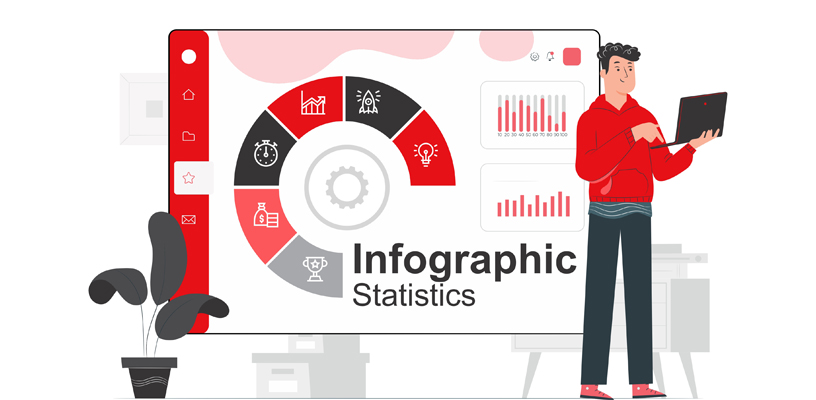Latest Trends in Infographics for 2024
These are some infographic trends that you can consider using to your advantage:
1. Conveying Data Through Illustrations
Data interpretation is a complex process that many people avoid getting into, especially when they are looking for vital pieces of information urgently. Infographic designs break this gap by making it possible for marketers to show data in an attractive and simple-to-understand manner.
For instance, The World Heart Federation shows the graveness of cardiovascular disease and risk factors.
Here’s another infographic from Visual Capitalist, showing how the population has grown over a period of 50 years. The infograph shows a running track and vivid colors.
2. AI-generated Infographics
Artificial intelligence has been all over the place, and its use for marketing purposes is no surprise. Many marketers resort to using AI tools to condense information pieces and turn them into infographics without requiring them to go through the whole process of designing and editing.
AI is a powerful collaborator that pairs well with human intelligence to create relevant outcomes. In fact, AI infographic generators can be used to add more life to dry designs, adding more life and making them immensely captivating.
For instance, Canva’s AI assistant, known as ‘Magic Studio,’ has a host of tools that can be used to create artistic and color designs within minutes. The tool’s incredible time-saving and versatile features can be used to arrange data and information in an aesthetically pleasing format.
3. Personalization in Infographics
Personalized designs can add more uniqueness to your data or information while also making them easy to remember. Besides, certain topics do need personalization to leave a lasting impression on the reader.
For instance, The Tea Republic used an infographic to lay out the history of tea. The side-by-side comparison of year and corresponding development makes it easier for the readers to understand how tea came to be.
Here’s another infographic showing the popular beverages that people like to order at the bar. The creative way of putting information is not only memorable but also relates to the theme of the infographic.
4. Accessible and Inclusive
Infographics allow a business to create content that anyone can access by making designs that are clutter-free, fonts that are easy to read, and information pieces that can be understood easily. Providing alternative text and making interactive infographics easy to access for people with disabilities will enable your brand to reach a wider audience, enhance the user experience, and demonstrate a commitment to inclusivity and accessibility.
For instance, the infographic used by CDC is clear to read as it outlines what needs to be done and tips on staying safe during the cold season.
5. Use of Bold Typography
Bold typography, which uses oversized font styles, unexpected placement of information, and dynamic spacing between content pieces, presents information in a way that demands attention. The designs are often mesmerizing and do not necessarily have to align with the business’s brand compass, allowing more experimental freedom.
For instance, the following infographic talks about being safe when using social media. To catch attention and make people want to read, vibrant designs and colors have been used.
